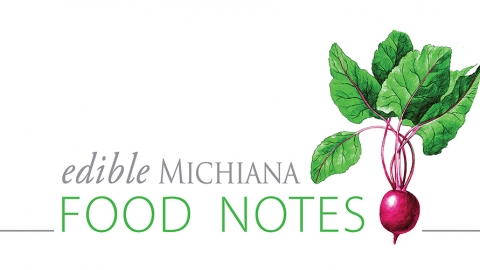June Food Notes: Is Local Food Actually Healthier?
Figuring out how to eat healthy in today’s food landscape can be wildly confusing. An abundance of food tempts us while the manifestos of paleo pledges, raw food advocates, and a cornucopia of other dietary regimens make it even harder to decide which food path to take.
And then there’s the “locavore movement.”
The philosophy is simple: eat local food! We know that local food is better for our environment and the economy. But what about our health? Is local food actually healthier for us?
Let’s take a closer look:
Local produce is more nutritious.
The more time fruits and vegetables spend on a truck or in storage, the more vitamins, minerals, and other nutrients are lost. The moment a vegetable is harvested, its valuable nutrients begin to deteriorate. A study published in the International Journal of Food Sciences and Nutrition showed that after broccoli is shipped a long distance, the vitamin C content is diminished by 50%. Therefore, local produce eaten within a few days of being picked is more nutrient dense than produce that has traveled thousands of miles.
Local produce is harvested at peak ripeness.
Non-local produce is usually harvested before it is ripe so it can survive the long journey to your plate. Local farmers usually allow produce to grow at a natural pace. Produce that lingers on the vine and ripens fully before being harvested is more nutritious and usually has more flavor. A study published in the Journal of Agricultural and Food Chemistry found that the levels of health-promoting antioxidants in blackberries more than quadrupled when fully ripe.
Local produce may be safer.
There's a unique kind of assurance that comes from looking a farmer in the eye at a farmers market or driving by the fields where your food is grown. Local farmers take pride in providing their community with safe, nutritious food. In many instances, this means they use fewer pesticides. It’s common practice for small farmers to use fewer chemicals than large, industrialized farms, and many local small-scale farmers use organic methods even if they aren’t certified. Some even take the extra step to nourish plants with cover crops and other sustainable methods that put nutrients back in the soil.
Local produce tastes better.
Our taste buds are a good barometer for nutritional value. When nutrients degrade, so does flavor. The growing practices of local small-scale farmers tend to cultivate for flavor and nutrition rather than appearance, while large-scale industrial farms breed for large yields and the ability to endure long journeys. You’ve probably learned firsthand that uniformly red, perfectly spherical, unblemished tomatoes in the supermarket are watery and flavorless, while those scarred, lumpy heirloom tomatoes at the farmers market provide you with a sweet, intense explosion of flavor (and nutrients) when you bite into it.
Eating local is not a fad diet or health trend—it’s a way of life. It’s the practice of eating in rhythm with the seasons. There’s no rigorous meal plan or point system and no one is going to judge you for eating an orange in August or shopping at the supermarket. It’s all about doing the best we can and being mindful about where our food is coming from.
To add more local produce to your diet, find a local Michiana farmers market near you, sign up for a CSA, or even start a small vegetable garden in your own backyard! Eating local (and organic) whenever possible will make a tremendously positive impact not only on your health today, but also on the future health of the community and the environment.







